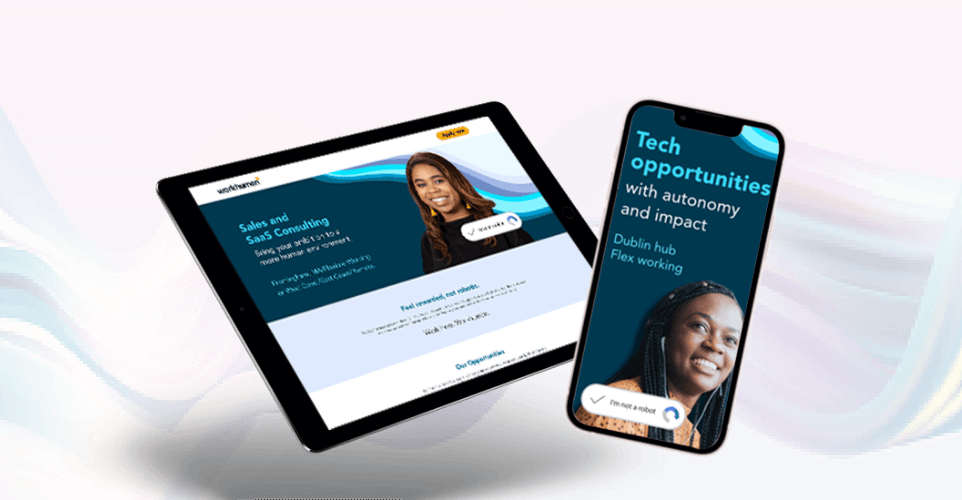What is it?
Put simply, Talent Mapping is a continuous process of determining a company’s hiring needs. It considers the company goals short-term and long-term, and analyses how well set up you are to achieve them. Talent Mapping can identify the need for new roles, changes to existing roles and progression for current employees.
It helps a business plan their short, medium and long-term recruitment needs as well as improving the quality of their hires.
How to approach Talent Mapping
Though your internal team can take on the task, it often makes more sense to outsource. Talent Acquisition teams already have their workload and targets to hit. Undertaking a large project like mapping out all hiring needs, may eat into the time needed for that work. Many companies offer Talent Mapping as a service, with the advantage being that they’re freer to engage with the various parts of the business necessary to complete this project.
Something non-negotiable with this type of project, is that input should come from as many areas of the business as possible. An important part of Talent Mapping is that you have a thorough understanding of what your team currently comprises. This helps identify your areas of strength as well as areas that need improvement. It can also help you identify individuals who you could promote from within.
Market intelligence and competitor analysis are two other areas of importance when mapping talent. Knowing how your offer stacks up against the competition and what skills they have within their team informs you on what you need to achieve your goals. This process can also uncover other valuable information about competitors such as compensation and benefits as well as things like learning and development opportunities.
Learning and development are important parts of Talent Mapping. Understanding how your existing team can progress and what other value they can offer to the business can help you identify promotion opportunities and future skills gaps.
What will it do for my business?
Aside from the obvious benefits of creating a solid long-term recruitment plan, there are other benefits to this process. One is inclusion – by involving all areas of your business in Talent Mapping, your employees will feel more engaged. This can help boost morale and gives confidence to individuals that their opinions, thoughts and concerns are considered.
Talent Mapping can help identify employees that might leave the company or ones that might be suitable for a promotion. In either scenario, it presents you with an opportunity to retain the employee. You can either offer them a promotion to take advantage of their abilities or plan for their replacement.
By involving people from all around the business, and planning short, medium and long-term requirements, you’ll have a more thorough understanding of what you need. This is advantageous when searching for top talent, as you’ll have more information to filter out unsuitable candidates.
Improved time-to-hire is something else companies can benefit from if they use Talent Mapping. As the process helps you identify what vacancies you have and what offer you need to make to receive the best applicants, sourcing, screening, interviewing and choosing your hires should take significantly less time than normal.
In addition to having your recruitment needs planned out and reducing time-to-hire, there is another major benefit of Talent Mapping; preserving your hiring resources. Not all companies have the same resources, so prioritising can have a significant impact on company growth.
A positive contribution to your Employer Brand is another perk of Talent Mapping. The process helps uncover the need for things like promotions, learning and development and extra support. Addressing these needs before they become an issue can ensure your employees aren’t being strained. This inevitably leads to a happier workforce, which usually results in a great Employer Brand.
How do Talent Works do Talent Mapping differently?
Talent Works has a three-tier offering for Talent Mapping; Standard, Advanced & Premier. Our Standard offering includes a simple overview of the economy and talent market, Advanced gives you a specific overview of the talent market for now and the future and our Premier offering is an all-round, strategic review of talent acquisition and retention.
The questions we answer early on in a Talent Mapping project inform the rest of the project. We learn about the supply of talent in the market, what levels of experience they have, what the demand for talent is and whether or not there’s a shortage. We check which locations have the best supply of talent, who the competitors are, which companies have the largest numbers of relevant talent and which jobs will be in demand in the future. These are just some of the questions we find answers to, and these play a significant role in how we progress.
Following on, we use real-time candidate supply and demand data, which is sourced from online talent intelligence platforms, LinkedIn Talent Insights and HireEZ. This gives us a wealth of information on talent, companies, jobs, skills, competitors, company reports and employer branding metrics. Following that, we conduct external perception surveys to provide a data-led profile of the people our clients want to attract. The insights we get from that informs us about what motivates prospective candidates, what their goals are and what their opinions of the client are by comparison with other companies. From this, we can advise clients on the best way to attract talent and give them pointers on what they need to say with their content and messaging.
Why should I invest in Talent Mapping?
If you’re looking to plan out your short, medium and long-term hiring goals, simplify the hiring process, but at the same time, attract the best talent in the market, Talent Mapping is something you should consider investing in. By thoroughly analysing the market, you can not only make your future recruitment easier, but you can also uncover insights that will improve aspects of your company you might not have thought about.
It also provides you with a framework for the future. You’ll have a better understanding of where talent can be found, how to talk to prospective candidates with content and messaging that resonates and how to build talent pools.







